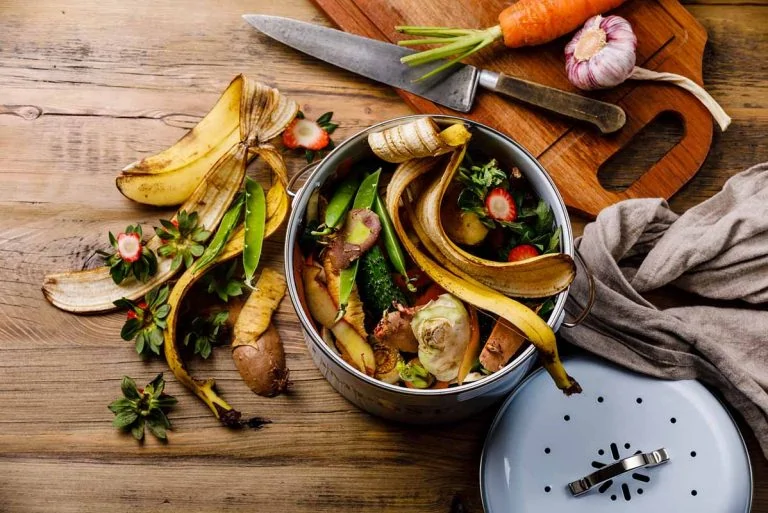Pillows can be made from a range of raw materials – some renewable and some not. So when it comes to figuring out how to recycle pillows, you need to do a bit of research.
Pillows are often made from plastic and petroleum-based materials like polyester that can take hundreds of years to break down and pile up in landfill.
However, it’s not safe to hang on to your old pillows forever, so it comes back to the question of how to recycle pillows. How do you get rid of them responsibly, and is it even possible?
In this post, we’ll outline how to recycle pillows in order to make the most of the world’s precious resources and avoid our waste polluting the environment.
Can you actually recycle pillows?
The answer is technically yes – but the process of how to recycle pillows itself is not particularly easy. It depends on what the pillows are made of. Some of the most common materials include:
- Cotton wadding and/or cotton fabric covers
- Down or feather filling
- Foam filling
- Polyester-based filling
Most of these materials can be recycled.
Like other types of textiles, recycling centers shred or grind up foam and fabric and reprocess it into products such as insulation, carpet underlay, and industrial rags.
Down, or light feather fibers, can also be recycled into down coats or new pillows. Heavier feather filling is less valuable and so recycling centers separate it out and may send it to landfill, or recycle it into cement or concrete.

Source: Flickr / Sondra Stewart
Isocyanite and polyol, which are the chemical components in foam, are recovered from foam pillow filling and turned into a powder that is used to absorb oil spills, or oil leaks from vehicles following accidents or at body shops. Polyol can also be recovered and purified before being reused in the chemical industry.
However, the foam itself is difficult to recycle and typically ends up in landfill.
Polyester-based filling is also difficult to recycle. This plastic material can be melted down to make PET pellets and other plastic products, or even processed back into oil for lubricants or fuel.

Source: Flickr / haven’t the slightest
However, this is not very cost effective and many recycling programs will not go to this much effort, so many polyester pillows end up in landfill.
Another issue is that pillows are typically made of more than one type of material, which need to be separated before recycling. Furthermore, pillows are also relatively bulky, making them more difficult to handle.
How to recycle pillows
All of the above information means that, although pillows are recyclable, it is relatively difficult to do so. This means that your local curbside recycling program most likely won’t accept them, though there are plenty of other options to recycle your old pillows:
Drop off recycling
Pillows require a fair bit of effort to recycle because their various types of materials need to be separated out. This, combined with their bulky nature, means that most municipal recycling programs won’t accept pillows for curbside recycling, though it’s worth checking with your local authority to see if they offer any type of textile recycling that accepts pillows.
For similar reasons, many drop-off recycling centers also don’t take old pillows.
The American Textile Service does accept pillows and other household textiles, but they, unfortunately, don’t have drop-off sites in all sites. Check this site to see if there is a drop-off bin near you.
If you live in the Pacific Northwest, you may also be able to use one of the drop-off bins in the GemText network.
Mail-in recycling programs
Another convenient and responsible way to dispose of your old pillows is through a mail-in recycling program. Organizations like TerraCycle accept pillows, other bedding, and textiles for recycling.

You simply mail in a box filled with your pillows and similar items, and the company will separate out the different materials and find facilities to recycle them all. This does involve a cost, but it’s arguably a small price to pay to know that your old bedding is being recycled.
How to recycle pillows in other ways
If you can’t find a good option to recycle your old pillows, there are other ways to responsibly dispose of them. Even if there are recycling options available, reusing, composting, or upcycling may be the more sustainable way to go, especially for foam and polyester-based pillows.
Be sure to wash your old pillows before you donate, reuse, or recycle them. You can run them through the washing machine, but you only need around a third of the amount of laundry detergent you’d use in a normal load.
Drying out pillows can take a long time, and it’s virtually impossible to properly air dry them in some winter climates. You can pop them in a clothes dryer for a bit, then air dry them to finish.
Donate them
For health reasons, most organizations like Goodwill and the Salvation Army won’t take pillows and bedding through their clothing donation bins. However, there are plenty of charities that welcome pillow donations so it’s worth checking with local non-profits.
Here are some starting points for charities to get in touch with and see if they’d like your old pillows:
- Homeless shelters
- Daycare centers
- Animal shelters
- Wildlife rehabilitation centers
- Vets
It’s always a good idea to give these charities a call or send them a quick email to check whether they accept pillows and how you need to prep these before donating them rather than just taking them in.
Many of these charities also look for duvets, comforters, and other bedding, so why not see if you have other items to donate at the same time?
Compost them
If you have down or feather pillows, you can probably compost them and turn this waste into fertilizer for your garden. Pure cotton covers can also be composted.

Source: Flickr / Razvan Orendovici
Separate out casing and covers and only place feather, down or 100% cotton material into your compost bin. Don’t think that you need to have a big yard to get into composting – you can even compost in your apartment!
Reuse them
Reusing is a good approach for foam pillows, as the foam itself is not easy to recycle and so usually ends up in landfill after the valuable chemicals have been extracted, even if you send it to a recycling center. The same is often true for polyester-based filling – as this is basically plastic, it takes a long time to break down and cannot be composted.
Therefore, it is much better to reuse or upcycle these kinds of pillows.
There are many ways to reuse your old pillows, including:
- Make a bed for your dog or cat
- Use them as knee pads for gardening or cleaning
- When you move house, pad your furniture with old pillows to stop it from getting damaged in transit
- Cut up foam filler and use it for sponges to wash your car
- For construction, such as insulation
- Seal old pillows in a trash bag and stuff them down unused chimneys to eliminate drafts
Upcycle them
You can also use old pillows as a raw material for craft or DIY projects – you’ll be surprised how many ways there are to do so!
Here are some fun ideas for upcycling your old pillows:
- To stuff DIY soft toys
- For batting for a quilting project
- To make a cozy kids’ pillow bed
- DIY a nice bed for your pet like this one
- Combine two old pillows to create a new, firmer pillow – see this tutorial to learn how
- Fill a pair of long socks with old pillow filling, and sew them together to make a draft stopper – this will also help to make your house more energy-efficient!
FAQs
It can be confusing to keep track of all the rules when it comes to recycling various types of materials, so we’ve answered some of the most commonly asked questions around recycling pillows.
Can I recycle old pillows?
Yes, you can recycle old pillows, but you probably won’t be able to do so as part of your local authority’s curbside recycling program. Those looking for an answer how to recycle pillows would likely be better off finding a local recycling center that will accept pillows, or use a mail-in service to recycle old pillows and bedding.
Alternatively, you could donate, reuse or upcycle your old pillows to dispose of them responsibly.
Can I compost old pillows?
This depends on what the pillow is made of. Down and feather pillow filler as well as 100% cotton casing can be composted, but most other pillow materials will not break down in compost.
You can also get organic buckwheat pillows that are fully compostable.
Prepare for composting by separating out the compostable and non-compostable components. For example, pull out down and feather filler, and separate cotton casing from non-compostable filler.
If you’re not sure, you can test it by composting a small amount of the material first.
How often do pillows need to be replaced?
All types of bedding, including pillows, have a limited lifespan. Over time, pillows can absorb oils, dust, and debris from our skin and the environment in general.
This encourages dirt, bacteria, and dust mites to build up in the pillow, which in turn can cause illnesses, acne, and allergies. Additionally, pillows flatten and lose their shape with time, so won’t offer you the same level of support and could damage your neck and cause headaches or other health issues.
The National Sleep Foundation recommends that you replace your pillow every one to two years, depending on the type of pillow. For example, latex pillows may last up to three years.
You can extend the life of your pillows by using a pillow protector, fluffing them regularly, and flipping them every day to change the side you sleep on. You should also wash your pillow according to the manufacturer’s instructions.
The responsible way to dispose of pillows
As a regular household item that needs to be replaced regularly, it’s important to know how to recycle pillows to avoid them ending up in landfill and polluting the environment. Most, though not all, of the materials pillows are made from can be recycled, though you’ll need to find a recycling program near you or use a mail-in service.
You could also donate your old pillows to charity, reuse, or upcycle them. If they are made from natural materials such as cotton or down, you can even compost your unwanted pillows!
For more guides to recycling common household items, take a look at our posts on recycling cardboard boxes, CDs and DVDs, and light bulbs.














